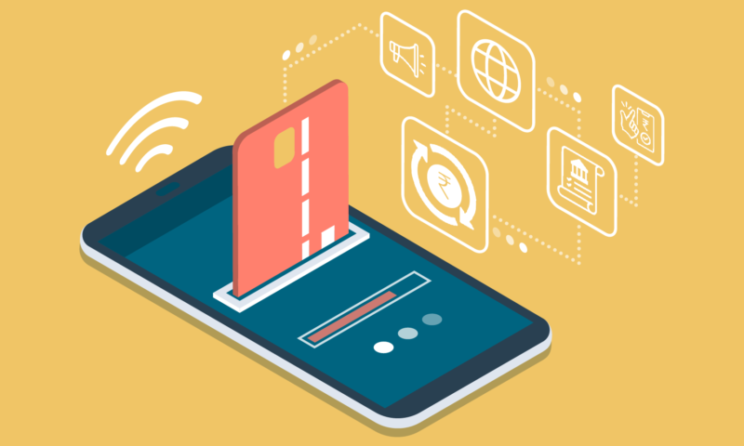
Introduction
In today’s fast-paced digital world, consumers expect convenience and speed in every aspect of their lives. This includes their financial transactions, where digital payments have become increasingly popular.
However, with convenience comes a new set of challenges. Digital payments need to be designed in a way that ensures a seamless user experience, or customers will quickly switch to competitors.
In this article, we’ll explore why user experience is critical in digital payments and how design can make all the difference, the key elements of design that contribute to an optimal user experience, the benefits of prioritizing design in digital payments, and best practices for designing user-centered digital payment experiences.
The Basics of User Experience in Digital Payments
When it comes to digital payments, user experience is the most important strategy for digital wallet app development. It’s no longer enough to offer a simple and secure way to transfer funds digitally; consumers expect a seamless and convenient experience.
In this section, we’ll dive into the basics of user experience in digital payments and explore the factors that influence it.
What is User Experience?
User experience (UX) refers to the overall experience a user has when interacting with a digital product or service.
In the context of digital payments, UX encompasses everything from the design of the payment interface to ease of use and security features.
Factors Influencing User Experience
Several factors influence the user experience in digital payments. The first is the ease of use of the payment interface, which includes factors like the layout, navigation, and functionality.
The second is the security features, such as two-factor authentication, encryption, and fraud prevention measures.
Finally, the speed and reliability of payment processing also play a crucial role in user experience.
Importance of a Seamless User Experience
- In the competitive world of digital payments, a seamless user experience can be the difference between retaining and losing customers.
- Consumers have many options when it comes to digital payments, and they won’t hesitate to switch to a competitor if they encounter any difficulties or inconveniences.
- Therefore, providing a seamless user experience is essential to building customer loyalty and staying ahead of the competition.
The Role of Design in Digital Payment User Experience
Design plays a crucial role in enhancing the user experience in digital payments. A well-designed payment interface can make the entire process more intuitive, user-friendly, and secure.
In this section, we’ll explore the key elements of design that contribute to an optimal user experience in digital payments.
Visual Design
The visual design of a payment interface includes elements like color, typography, and layout.
These elements are essential in creating a visually appealing interface that is easy to navigate and understand.
For example, using contrasting colors and clear typography can help guide the user’s eye to important information and calls to action.
Usability
The usability of a payment interface refers to how easy it is for users to accomplish their goals when using the interface.
This includes elements like the placement and labeling of buttons, the flow of the payment process, and the use of familiar patterns and conventions.
A well-designed payment interface should be intuitive and require minimal effort on the user’s part.
Accessibility
Accessibility refers to how easily users with disabilities can use the payment interface. This includes factors like the use of alt text for images, keyboard navigation, and screen reader compatibility.
Designing for accessibility ensures that all users can use the payment interface, regardless of their abilities.
Security
The security of a payment interface is essential to building trust with users. A well-designed payment interface should include security features like two-factor authentication, encryption, and fraud prevention measures.
Designing for security ensures that users can use the payment interface with confidence, knowing that their personal and financial information is protected.
The Benefits of Prioritizing Design in Digital Payments
Prioritizing design in digital payments offers several benefits for businesses and their customers.
A well-designed payment interface can increase user satisfaction, reduce errors and abandoned transactions, and build trust and loyalty with customers.
In this section, we’ll explore the key benefits of prioritizing design in digital payments.
Increased User Satisfaction
A well-designed payment interface can increase user satisfaction by making the payment process more intuitive, user-friendly, and enjoyable.
A positive user experience can lead to repeat business, positive reviews, and referrals to friends and family.
Reduced Errors and Abandoned Transactions
A poorly designed payment interface can lead to errors and abandoned transactions, which can result in lost revenue and frustrated customers.
By prioritizing design, businesses can reduce these issues and increase the likelihood of successful transactions.
Improved Brand Perception
A well-designed payment interface can improve the overall perception of a brand.
Customers are more likely to trust and remain loyal to a brand that provides a seamless and secure payment experience.
This can lead to increased customer retention, brand advocacy, and ultimately, revenue.
Competitive Advantage
Prioritizing design in digital payments can also provide a competitive advantage.
A well-designed payment interface can differentiate a business from its competitors, especially in crowded markets.
Best Practices for Designing Digital Payment User Experiences
Designing a user-centered digital payment experience requires a deep understanding of the needs and expectations of users.
In this section, we’ll explore best practices for designing a payment interface that is intuitive, user-friendly, and secure.
These best practices include focusing on simplicity, providing clear feedback, ensuring accessibility, and prioritizing security.
Focus on Simplicity
A simple and intuitive payment interface is essential for reducing user frustration and increasing successful transactions.
The payment process should be easy to understand, with clear and concise instructions and minimal steps required.
Provide Clear Feedback
Providing clear feedback throughout the payment process can help users feel confident in their actions and reduce the likelihood of errors or abandoned transactions.
Feedback can include confirmation messages, progress bars, and error messages that are easy to understand and provide clear guidance.
Ensure Accessibility
Designing for accessibility ensures that all users, regardless of their abilities, can use the payment interface.
This includes providing keyboard navigation, screen reader compatibility, and alt text for images.
Prioritize Security
Prioritizing security in the design of a payment interface can build trust with users and reduce the risk of fraud or data breaches.
Security features should include two-factor authentication, encryption, and fraud prevention measures.
Test and Iterate
Testing and iterating on the payment interface can help identify and address usability issues and user pain points.
User testing and feedback can provide valuable insights into how the payment interface can be improved and refined.
The Future of Design in Digital Payments
As digital payments continue to grow in popularity, the role of design in shaping the user experience will become increasingly important.
In this section, we’ll explore the future of design in digital payments and how emerging technologies and trends will impact the way we design payment interfaces.
Personalization
Personalization will become increasingly important in digital payment app development when comes to its design, with interfaces tailored to individual user preferences and behaviors.
This can include personalized recommendations, customized payment flows, and personalized messaging.
Integration with Emerging Technologies
Digital payments will continue to integrate with emerging technologies such as blockchain, biometrics, and virtual and augmented reality.
These technologies will provide new opportunities for secure and seamless payment experiences.
Voice and Gesture Control
Voice and gesture control will become more prevalent in digital payment interfaces, allowing users to make payments hands-free.
This can include voice-activated payments and gesture-based payments using sensors and cameras.
Emphasis on Sustainability
As consumers become more environmentally conscious, there will be an increased emphasis on sustainability in digital payment design.
This can include reducing paper receipts, using eco-friendly materials in packaging, and implementing carbon offset programs.
Emotionally Intelligent Design
The emotionally intelligent design will become more prevalent in digital payment interfaces, with interfaces that can recognize and respond to users’ emotions.
This can include using facial recognition to detect user emotions and adjusting the interface accordingly.
Conclusion
In conclusion, designing a user-centered and secure digital payment experience is crucial for businesses in today’s digital age. By prioritizing design, businesses can improve user satisfaction, reduce errors and abandoned transactions, and build trust with their customers.
Best practices such as simplicity, clear feedback, accessibility, and security are essential for creating a successful payment interface. Looking to the future, emerging technologies and trends will continue to shape the way we design payment interfaces, with a focus on personalization, integration with new technologies, and sustainability.
Ultimately, businesses that prioritize design in their digital payment experience can gain a competitive edge and build lasting customer relationships.






